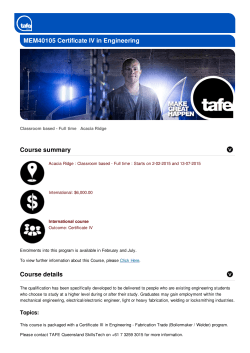
Code of Conduct Hazelnut module Version 0.7 www.utzcertified.org
Code of Conduct Hazelnut module Version 0.7 www.utzcertified.org 0 UTZ Certified Training Center website: www.utzcertified-trainingcenter.com Please send your comments or suggestions to: certification@utzcertified.org Or via regular mail to: UTZ Certified Standard and Certification Department De Ruyterkade 6 bg 1013 AA Amsterdam The Netherlands © UTZ Certified 2014 No part of this publication may be reproduced, stored in a retrieval system, or transmitted in any form or by any means, electronic, mechanical, photocopying, recording or otherwise without full attribution. 1 Introduction The Hazelnut Module is used along with the Core Code by all hazelnut producers and groups (with or without their own factory) who wish to obtain Code of Conduct certification. The Module contains requirements applicable to hazelnut production and processing activities, up until production of in shell hazelnuts. A HN. A.1 HN. A.2 B HN. B.1 HN. B.2 HN. B.3 MANAGEMENT Resources identification and risk assessments Orchard site is at a safe distance from sources of pollution (industrial and livestock) as to prevent contact with contaminated soils, water or air. A procedure is in place for submitting and addressing complaints. This procedure is accessible for workers. FARMING PRACTICES Farm maintenance Except on slopes of more than 20%, the ground is cleaned from weeds at the latest three to ten days before the harvest. The hazelnut shrub is pruned annually in the period of October, November, December time to obtain optimal tree structure and health. Dried, dense, unproductive and unnecessary shoots, branches and suckers are removed. To optimize pollination and normalize YEAR 4 YEAR 3 YEAR 2 YEAR 1 CONTROL POINT Level of inspection The column “Applicable to” indicates whether the control point applies to the group and/or the group member for groups certified against the Core Code for group certification. Tea producers certified against the Core Code for individual certification must comply with all control points applicable to them in the Module. If there is a contradiction between what is required from the Core Code and what is required from the Module, the requirement from the Module takes precedence. Clarification for compliance M G M M Weeds are removed by hand or hand tools unless this is not feasible. Pruning is finished before the buds open. 4-5 branches per shrub are optimal. M 2 HN. B.4 HN. B.5 HN. B.6 production, at least two other varieties of hazelnut trees are evenly inter-planted amongst the main variety and represent 10% of the total number of shrubs. At least 1 month before harvest livestock M has to be out of the orchard in order to avoid damaging and contamination of the hazelnuts. Soil and fertility management When machinery is used, soil compaction G+M is monitored. The use of heavy machinery in areas with wet fragile soils or areas with a high risk of soil erosion is avoided. Harvest and postharvest Harvest Hazelnuts are harvested at the M appropriate time and using the best method for optimizing quality and crop health. HN. B.7 Nuts are not left on the ground longer than 3 days. In case of handpicking, a sheet is placed on the ground below the tree before shaking it. Postharvest HN. B.8 The handpicked husked hazelnuts are pre-dried on stiff beds without contact with soil and roads and protected from rainfall, until their leaves turn brown. HN. B.9 In case sheets are used against rainfall during drying of hazelnut (both husked and in shell), they must be hanged 30-40 cm above the hazelnuts product to allow air circulation. HN. B.10 After de-husking, in shell hazelnuts are left to dry a second time till the kernels have reached a maximum rate of humidity of 6%. M HN. B.11 Where nuts are likely to have become infested by insects or other pests, they must be treated with fumigants or other suitable means before storage or processing. M C Machinery is: tractors, trailers, harvesters, shakers sweepers, etc. Hazelnuts are harvested as soon as possible after maturation. Hazelnuts are not harvested before the official start date if the government indicates this date. M M M WORKING CONDITIONS 3 HN. C.1 HN. C.2 HN. C.3 HN. C.4 HN. C.5 HN. C.6 Worker’s health and safety Facilities, equipment and accident procedures Workers are provided at no cost with gloves in case of handpicking, and masks when working in dusty orchard or operating de-husking machines. Workers are trained on the use of personal protective equipment and training record signed by the workers are made available for inspection by the IMS of the certificate holder. Workers’ rights Child labour Children under 16 years are not employed as permanent and/or seasonal workers. In case local authorities in hazelnut producing areas state 15 years as minimum age, this age applies. Wages and contracts The producer makes wage payments directly to the workers concerned (also applicable in the case workers are supplied by labor contractors). The records are signed by the workers. The certificate holder checks those records within the IMS. G G+ M Training of workers refers to the use of protective equipment for harvesting activities. G+ M Age is counted according to European age counting rules G+ M Exceptions are: payments in line with national laws or regulations or collective bargaining agreements. The producer does not make any unapproved deductions (for e.g. food and transportation) from wages for the purpose of obtaining or retaining employment. The labor contractor’s commission is paid directly by the producer and made transparent to the workers to avoid double commission M The producer only employs foreign migrant workers if they are registered and in the possession of a valid work permit. The certificate holder verifies the list of workers contracted provided by the producer through the IMS. G+ M The records include at least the names, dates of payment, salary paid (amount). This applies for payments made by a worker to an employer or his representative or to any labor contractor. “Unapproved” means other than agreed in the contract or defined by law. The producer validates all workers for their right to work by reviewing original documentation and keeps a list of approved workers. “Registration” of foreign workers need to be done at the Turkish embassy of their country of origin 4 HN. C.7 HN. C.8 HN. C.9 Written employment G+ contracts/agreements are in place for M all seasonal workers. Contracts include: 1) General employment conditions 2) Gross and net wage and all benefits 3) Mandatory deductions (e.g. tax and social security). Contracts need to be understood by the workers. Contracts need to be centrally stored, checked by the certificate holder through the IMS and a copy must be given to each worker. In the case of supply of seasonal G migrant workers through employment agencies and/or labor contractors, the certificate holder implements procedures to enable adequate control, related to seasonal migrant workers’ identification. Respectful treatment of workers The certificate holder through the IMS verifies that the producer allows all workers (including domestic and seasonal migrant workers) to freely perform cultural expressions like speaking their mother tongue. G+ M The certificate holder verifies that the written contracts/agreements are in place through the IMS. Deductions for social security are not required for workers who work less than 30 days in a row for one employer . The certificate holder makes the list to be audited including: -full name of the worker -gender -date of birth -nationality Instead of a list, a copy of each worker and their families can be provided The certificate holder checks through internal inspection. Living conditions and services HN. C.10 HN. C.11 Housing In case seasonal migrant workers are G accommodated in the common tent settlements, the certificate holder makes arrangements with the relevant settlement/municipal authorities for clean and safe living conditions, including hygienic sanitation and safe drinking water (functioning and with respect for people/gender, etc.). Workers living on-site have clean and G safe living quarters. Special attention is given to hygienic sanitation, safe drinking water, clean cooking and eating areas, ventilation, protection against weather conditions, and safe storage of personal items. The actions undertaken to make these arrangements are documented. Respect for people/gender takes into account gender related privacy. Living quarters can be locked and if possible have access to electricity. The quarters have divisions between families or between men and women if there are 5 quarters for individual workers. HN. C.12 HN. C.13 Child care provisions and education The producer keeps up-to-date records G+ of the family of each worker, indicating M their names, gender and date of birth. The copies of the records are signed by the workers and checked by certificate holder for verification. In areas where seasonal migrant G workers are densely situated, the certificate holder makes arrangements with local authorities to provide day care facilities for children between 2‐16 years old during working hours. Total mandatory control points per year Total additional control points per year Instead of a list, a copy of the ID of each worker’s family member can be provided. In case of scattered settlements and for children living on-site, transport between settlements must be arranged to allow children to go to a centralized day care. The actions undertaken to make these arrangements are documented. Year 1 Year 2 Year 3 Year 4 14 12 23 3 25 1 25 1 Number of additional control points to comply with 0 0 0 1 Total control points to comply with per year 14 23 25 26 6
© Copyright 2025












